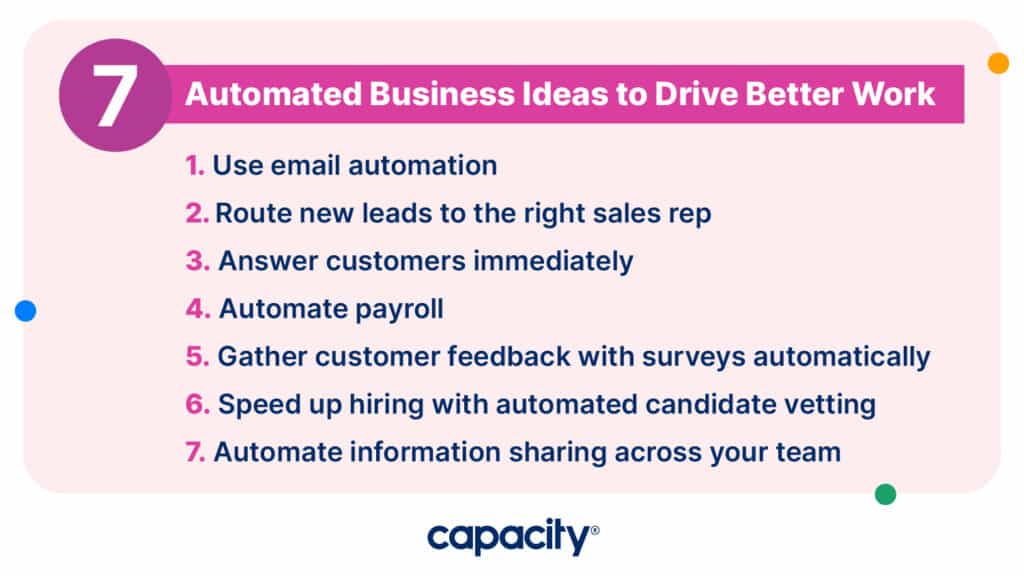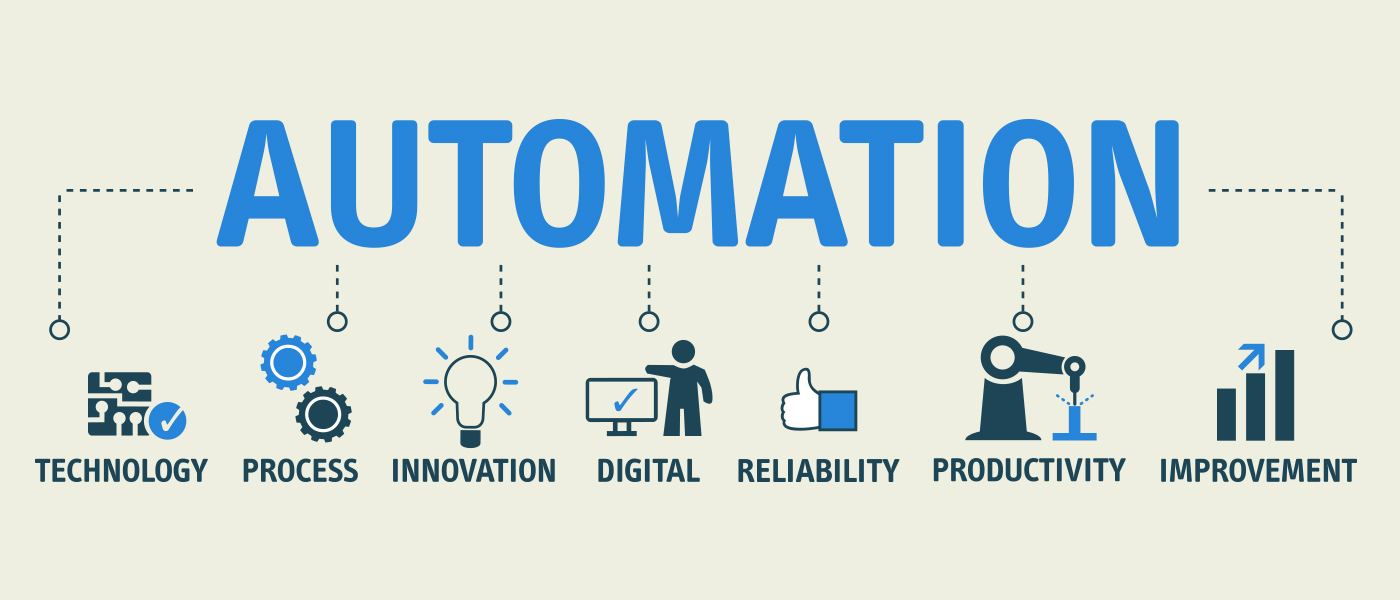Unlocking the Potential of Automated Businesses
Automated businesses have revolutionized the way entrepreneurs operate, providing a unique opportunity to increase efficiency, reduce labor costs, and achieve scalability. By leveraging automation, business owners can break free from the constraints of manual labor and focus on high-leverage activities that drive growth and revenue. In this article, we will explore the concept of automated businesses and provide a step-by-step guide on how to start an automated business.
One of the primary benefits of automated businesses is the ability to achieve a better work-life balance. By automating repetitive tasks and processes, entrepreneurs can free up time and energy to focus on strategic decision-making, creativity, and innovation. This, in turn, can lead to increased revenue and profitability, as well as a more fulfilling and sustainable business model.
Another significant advantage of automated businesses is their ability to scale quickly and efficiently. With automation, businesses can handle increased volumes of work without a corresponding increase in labor costs. This makes it easier to expand into new markets, launch new products or services, and respond to changes in the market.
However, starting an automated business requires careful planning and execution. It involves identifying the right business model, selecting the right tools and software, and setting up a solid foundation for automation. In the following sections, we will delve deeper into these topics and provide practical tips and strategies for building a successful automated business.
Whether you’re an aspiring entrepreneur or an established business owner, learning how to start an automated business can be a game-changer. By embracing automation, you can unlock new levels of efficiency, productivity, and profitability, and achieve a better work-life balance in the process.
Identifying the Right Business Model for Automation
When it comes to starting an automated business, selecting the right business model is crucial for success. Not all businesses are created equal, and some are more suitable for automation than others. In this section, we’ll explore the different types of businesses that can be automated and provide examples of successful automated businesses.
E-commerce businesses are a prime example of a business model that can be highly automated. With the help of automation tools, e-commerce businesses can streamline tasks such as order fulfillment, inventory management, and shipping. For instance, Amazon’s e-commerce platform is heavily automated, allowing the company to process and ship millions of orders every day.
Digital marketing agencies are another example of a business model that can be automated. By using automation tools, digital marketing agencies can automate tasks such as social media management, email marketing, and lead generation. This allows them to focus on high-leverage activities such as strategy and creative direction.
Software as a Service (SaaS) businesses are also well-suited for automation. SaaS businesses can automate tasks such as customer onboarding, billing, and support, allowing them to focus on product development and customer success. Examples of successful SaaS businesses include companies like Salesforce and Dropbox.
Other business models that can be automated include affiliate marketing, online education, and subscription-based services. When selecting a business model for automation, it’s essential to consider factors such as scalability, profitability, and competition.
When learning how to start an automated business, it’s crucial to choose a business model that aligns with your goals and resources. By selecting the right business model, you can set yourself up for success and create a sustainable and profitable business.
In the next section, we’ll explore the importance of choosing the right tools and software for automating business processes. We’ll introduce popular automation tools and discuss their features and benefits.
Choosing the Right Tools and Software for Automation
When it comes to automating business processes, selecting the right tools and software is crucial for success. With so many options available, it can be overwhelming to choose the best tools for your business. In this section, we’ll introduce popular automation tools and discuss their features and benefits.
Zapier is a popular automation tool that allows businesses to connect different apps and services, automating tasks and workflows. With Zapier, businesses can automate tasks such as data entry, email marketing, and social media management. For example, a business can use Zapier to connect their e-commerce platform to their email marketing software, automating the process of sending abandoned cart emails to customers.
IFTTT (If This Then That) is another popular automation tool that allows businesses to create customized workflows based on specific triggers and actions. With IFTTT, businesses can automate tasks such as social media management, customer support, and lead generation. For example, a business can use IFTTT to create a workflow that sends a welcome email to new customers when they make a purchase.
Automate.io is a powerful automation tool that allows businesses to automate complex workflows and tasks. With Automate.io, businesses can automate tasks such as data integration, workflow automation, and business process management. For example, a business can use Automate.io to automate the process of integrating data from different sources, such as CRM and marketing automation software.
Other popular automation tools include Hubspot, Marketo, and Pardot. When choosing an automation tool, it’s essential to consider factors such as ease of use, scalability, and integration with existing systems.
When learning how to start an automated business, it’s crucial to choose the right tools and software for automating business processes. By selecting the right tools, businesses can streamline tasks, increase efficiency, and reduce costs.
In the next section, we’ll discuss the importance of setting up a solid foundation for automation, including defining business goals, identifying key performance indicators (KPIs), and establishing a workflow.
Setting Up a Solid Foundation for Automation
Before automating business processes, it’s essential to set up a solid foundation for automation. This includes defining business goals, identifying key performance indicators (KPIs), and establishing a workflow. A well-planned foundation will help ensure that automation efforts are effective and efficient.
Defining business goals is a critical step in setting up a solid foundation for automation. Business goals should be specific, measurable, achievable, relevant, and time-bound (SMART). For example, a business goal might be to increase revenue by 20% within the next 6 months. By defining clear business goals, businesses can focus their automation efforts on achieving specific objectives.
Identifying KPIs is also crucial for setting up a solid foundation for automation. KPIs are metrics that measure the performance of business processes and help businesses track progress towards their goals. For example, KPIs for an e-commerce business might include metrics such as conversion rate, average order value, and customer satisfaction. By tracking KPIs, businesses can identify areas for improvement and optimize their automation efforts.
Establishing a workflow is another essential step in setting up a solid foundation for automation. A workflow is a series of tasks that are performed in a specific order to achieve a business goal. By establishing a workflow, businesses can identify tasks that can be automated and optimize their automation efforts. For example, a workflow for an e-commerce business might include tasks such as order processing, inventory management, and shipping.
When setting up a solid foundation for automation, it’s also important to consider the scalability of business processes. Scalability refers to the ability of business processes to handle increased volumes of work without a corresponding increase in costs. By designing scalable business processes, businesses can ensure that their automation efforts are effective and efficient.
By setting up a solid foundation for automation, businesses can ensure that their automation efforts are effective and efficient. This includes defining business goals, identifying KPIs, establishing a workflow, and designing scalable business processes. In the next section, we’ll discuss how to automate repetitive tasks and processes, such as data entry, email marketing, and social media management.
Automating Repetitive Tasks and Processes
One of the most significant benefits of automation is the ability to automate repetitive tasks and processes. By automating these tasks, businesses can free up time and resources to focus on high-leverage activities such as strategy, creativity, and innovation.
Data entry is a great example of a repetitive task that can be automated. By using automation tools such as Zapier or Automate.io, businesses can automate the process of entering data into their CRM or marketing automation software. This can save hours of time each week and reduce the risk of human error.
Email marketing is another area where automation can be highly effective. By using automation tools such as Mailchimp or Constant Contact, businesses can automate the process of sending emails to their customers and prospects. This can include automated email sequences, abandoned cart emails, and welcome emails.
Social media management is another area where automation can be highly effective. By using automation tools such as Hootsuite or Buffer, businesses can automate the process of posting updates to their social media accounts. This can include scheduling posts in advance, responding to comments and messages, and tracking engagement metrics.
When automating repetitive tasks and processes, it’s essential to consider the following best practices:
Start small: Begin by automating a single task or process and then gradually scale up to more complex automations.
Use the right tools: Choose automation tools that are specifically designed for the task or process you want to automate.
Monitor and optimize: Continuously monitor your automated systems and optimize them for better performance.
By automating repetitive tasks and processes, businesses can save time, reduce costs, and increase productivity. In the next section, we’ll discuss the importance of monitoring and optimizing automated systems to ensure they are running efficiently and effectively.
Monitoring and Optimizing Automated Systems
Once an automated system is up and running, it’s essential to monitor and optimize it to ensure it’s running efficiently and effectively. Monitoring and optimization are critical components of maintaining a successful automated business.
Tracking key performance indicators (KPIs) is a crucial aspect of monitoring an automated system. KPIs provide insights into the performance of the system and help identify areas for improvement. For example, KPIs for an e-commerce business might include metrics such as conversion rate, average order value, and customer satisfaction.
Identifying bottlenecks is another important aspect of monitoring an automated system. Bottlenecks can occur when a process or task becomes overwhelmed, causing delays or inefficiencies. By identifying bottlenecks, businesses can optimize their automated systems to improve performance and efficiency.
Making data-driven decisions is also critical for optimizing an automated system. By analyzing data and metrics, businesses can make informed decisions about how to improve their automated systems and achieve their goals.
Some best practices for monitoring and optimizing automated systems include:
Regularly reviewing KPIs and metrics to identify areas for improvement.
Conducting regular system checks to identify bottlenecks and inefficiencies.
Using data analytics tools to gain insights into system performance.
Continuously testing and refining automated processes to improve efficiency and effectiveness.
By monitoring and optimizing automated systems, businesses can ensure they are running efficiently and effectively, and make data-driven decisions to drive growth and success.
In the next section, we’ll discuss how to scale an automated business for growth, including strategies for increasing revenue, expanding into new markets, and building a team.
Scaling an Automated Business for Growth
Once an automated business is up and running, it’s essential to scale it for growth. Scaling an automated business requires a strategic approach to increase revenue, expand into new markets, and build a team.
Increasing revenue is a critical component of scaling an automated business. This can be achieved by optimizing automated processes, improving marketing efforts, and expanding product or service offerings. For example, an e-commerce business can increase revenue by optimizing its automated marketing campaigns, improving its product offerings, and expanding into new markets.
Expanding into new markets is another key strategy for scaling an automated business. This can be achieved by identifying new target audiences, creating new products or services, and establishing partnerships with other businesses. For example, a software as a service (SaaS) business can expand into new markets by creating new software products, identifying new target audiences, and establishing partnerships with other businesses.
Building a team is also essential for scaling an automated business. This can be achieved by hiring new employees, outsourcing tasks to freelancers or contractors, and establishing partnerships with other businesses. For example, a digital marketing agency can build a team by hiring new employees, outsourcing tasks to freelancers or contractors, and establishing partnerships with other businesses.
Some best practices for scaling an automated business include:
Continuously monitoring and optimizing automated processes to improve efficiency and effectiveness.
Identifying new opportunities for growth and expansion.
Building a team of skilled and experienced professionals.
Establishing partnerships with other businesses to expand into new markets.
By scaling an automated business, entrepreneurs can achieve significant growth and success. In the next section, we’ll discuss the importance of maintaining a competitive edge in the automated business landscape.
Maintaining a Competitive Edge in the Automated Business Landscape
In today’s fast-paced business environment, it’s essential to stay up-to-date with the latest trends and technologies in automation to maintain a competitive edge. The automated business landscape is constantly evolving, and businesses that fail to adapt risk being left behind.
One way to stay informed is to attend industry conferences and events. These events provide a platform for businesses to learn about the latest automation trends and technologies, network with other professionals, and stay ahead of the competition.
Another way to stay informed is to follow industry leaders and experts on social media. Many industry leaders and experts share their insights and expertise on social media platforms, providing valuable information and resources for businesses looking to stay ahead of the curve.
Additionally, businesses can stay informed by reading industry publications and blogs. These publications and blogs provide in-depth information and analysis on the latest automation trends and technologies, helping businesses to stay informed and make informed decisions.
Some best practices for maintaining a competitive edge in the automated business landscape include:
Staying up-to-date with the latest automation trends and technologies.
Attending industry conferences and events.
Following industry leaders and experts on social media.
Reading industry publications and blogs.
By maintaining a competitive edge in the automated business landscape, businesses can stay ahead of the competition and achieve long-term success. Remember, starting an automated business requires a strategic approach, and staying informed is key to success.






